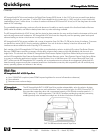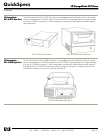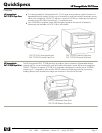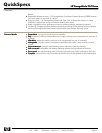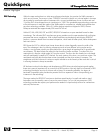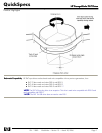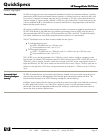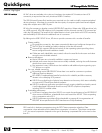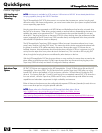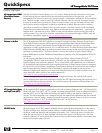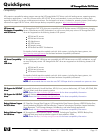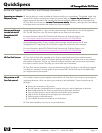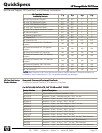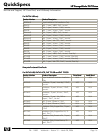
Proven Reliability
Proven ReliabilityProven Reliability
Proven Reliability
HP DDS drives have proven to be exceptionally reliable backup devices. Hardware reliability is typically
measured by MTBF (mean time between failures) quoted in a number of hours at a particular duty cycle.
Duty cycle is a measure of average usage per day. For example, a 12% duty cycle means the device is
used an average of 3 hours per day, whereas a 100% duty cycle means that it is used 24 hours per day.
A drive's predicted MTBF is calculated from a series of tests done on a large population of drives both
before and after product launch.
HP's ongoing reliability improvements have recently resulted in an increase in reliability specifications for
HP DAT drives based on real field data. By completing an analysis of actual MTBF using the years of
data captured about HP DAT products, HP discovered that our DDS-4 and DAT 72 tape drives deliver
even better reliability than was initially predicted and documented in our specifications.
The DAT QuickSpecs have now been revised to reflect the new figures:
The old specifications were:
MTBF: 400,000 hours at a 12% duty cycle
Unrecoverable error rate: 1 bit in 10
-15
The new specifications are:
MTBF: 125,000 hours at a 100% duty cycle or 1 million hours at a 12% duty cycle
Unrecoverable error rate: 1 bit in 10
-17
DAT's MTBF is now typically expressed with a 100% duty cycle to make it simpler to compare to other
tape formats; for example, HP's enterprise-level LTO Ultrium drives have an MTBF of 250,000 hours at a
100% duty cycle. In practice, however, unlike Ultrium drives (used 24x7 as the most popular choice for
large tape libraries), few DAT drives would ever be used 24 hours a day. Using a 12% duty cycle that we
believe is more typical for a DAT drive, the figure becomes an impressive 1 million hours at a 12% duty
cycle.
Automated Head
Automated HeadAutomated Head
Automated Head
Cleaning/Intelligent
Cleaning/IntelligentCleaning/Intelligent
Cleaning/Intelligent
cleaning
cleaningcleaning
cleaning
HP DDS drives benefit from an automatic head cleaning "sweeper" that can be used during the write or
read recovery procedure to dislodge debris from the tape path and recording heads and drive. This
feature reduces the need to use a DDS cleaning cartridge for manual cleaning.
Intelligent cleaning determines the cleaning provided by a cleaning cartridge when loaded by monitoring
the drive performance when in use. If the drive is performing well, a routine maintenance clean is
performed. If the drive has degraded performance the cleaning is automatically made more robust to
recover the drive to optimum performance.
QuickSpecs
HP StorageWorks DAT Drives
HP StorageWorks DAT DrivesHP StorageWorks DAT Drives
HP StorageWorks DAT Drives
Product Highlights
DA - 11883 Worldwide — Version 15 — March 20, 2006
Page 8



